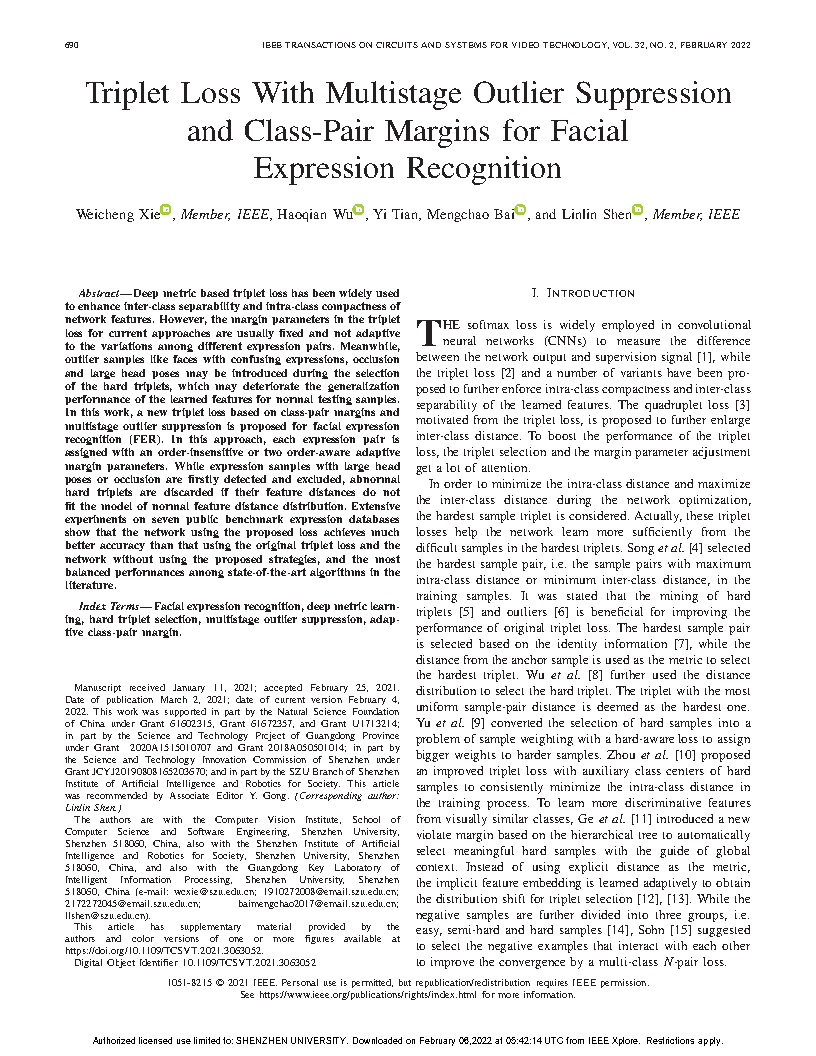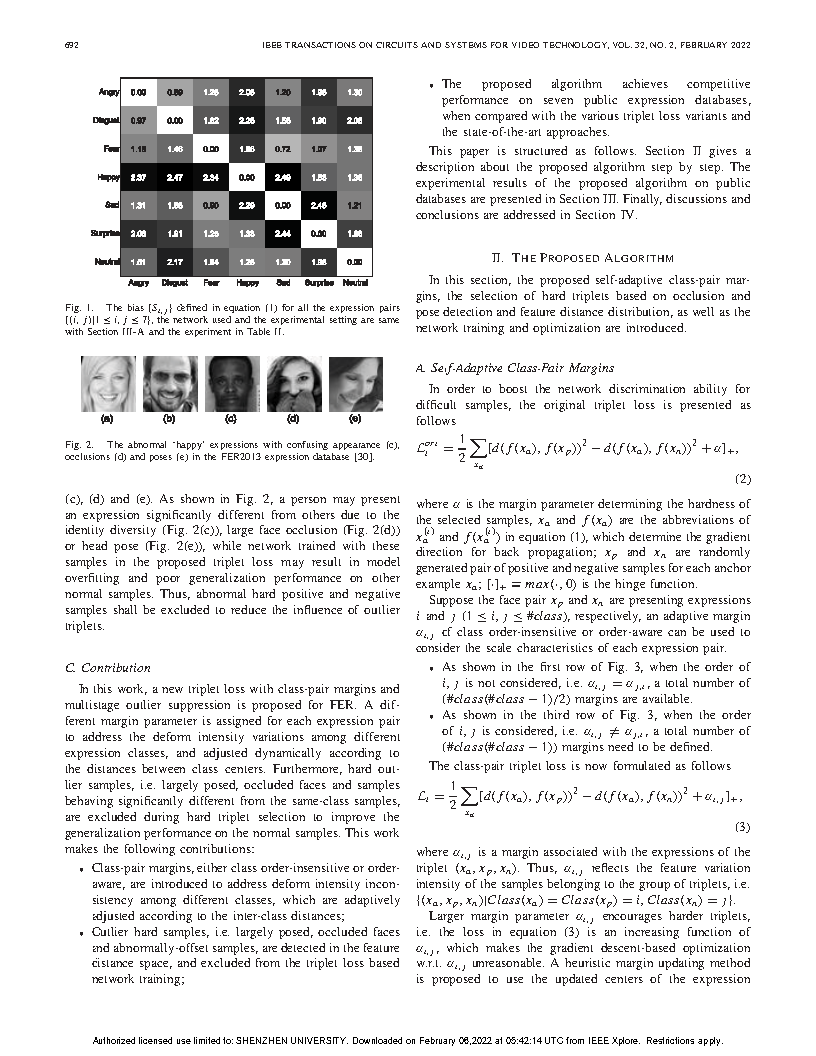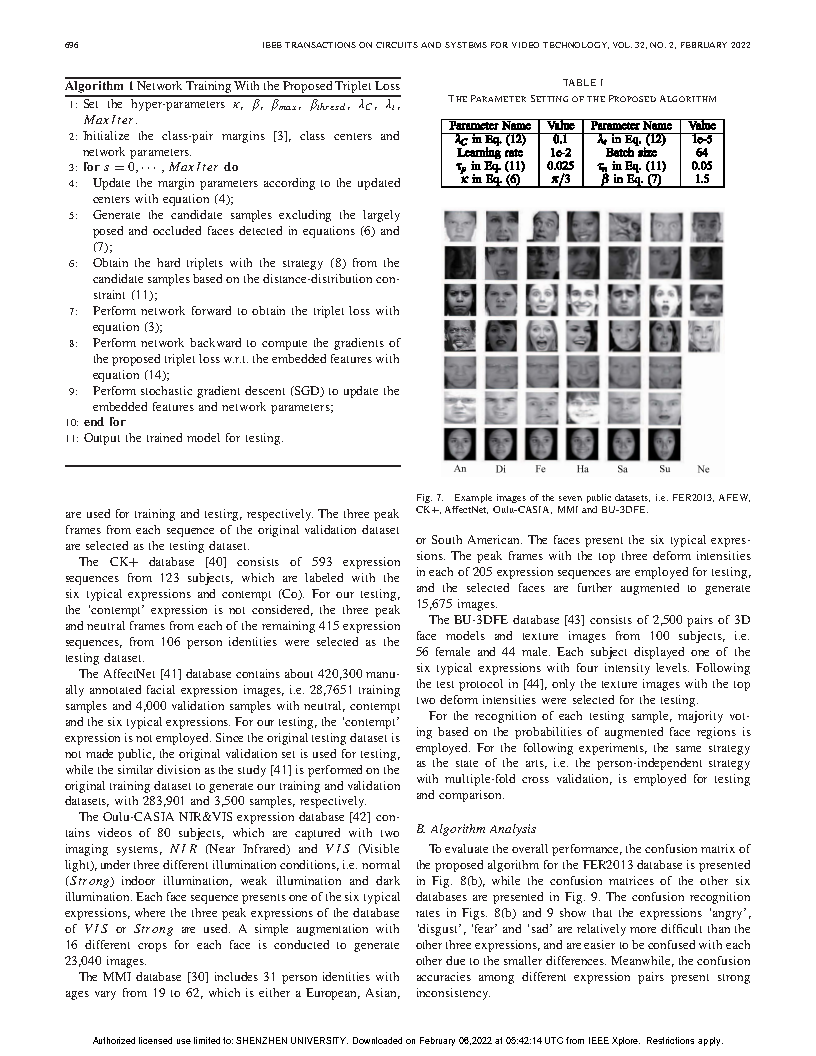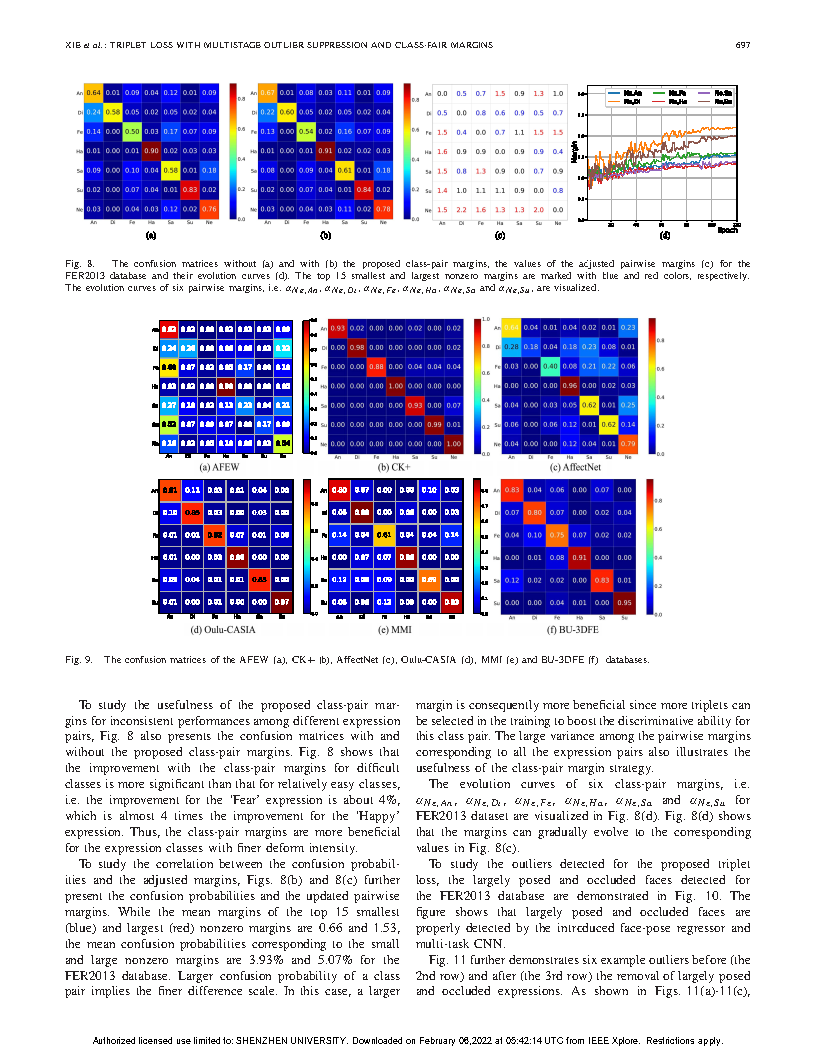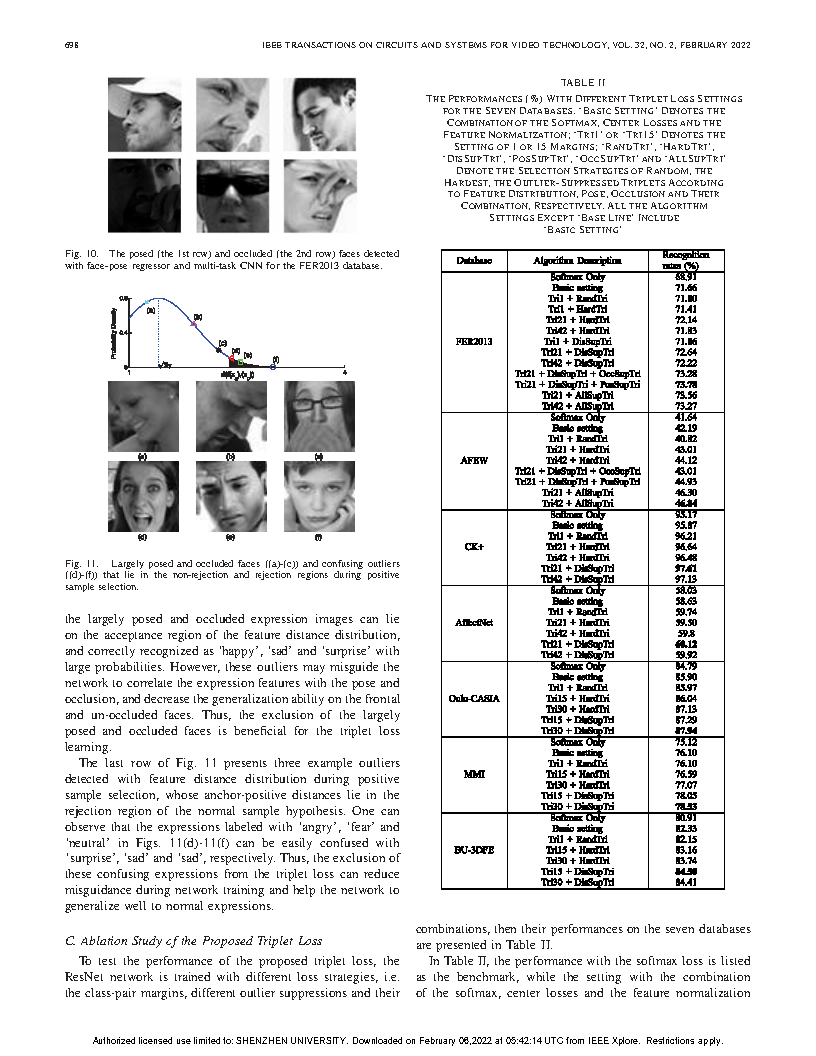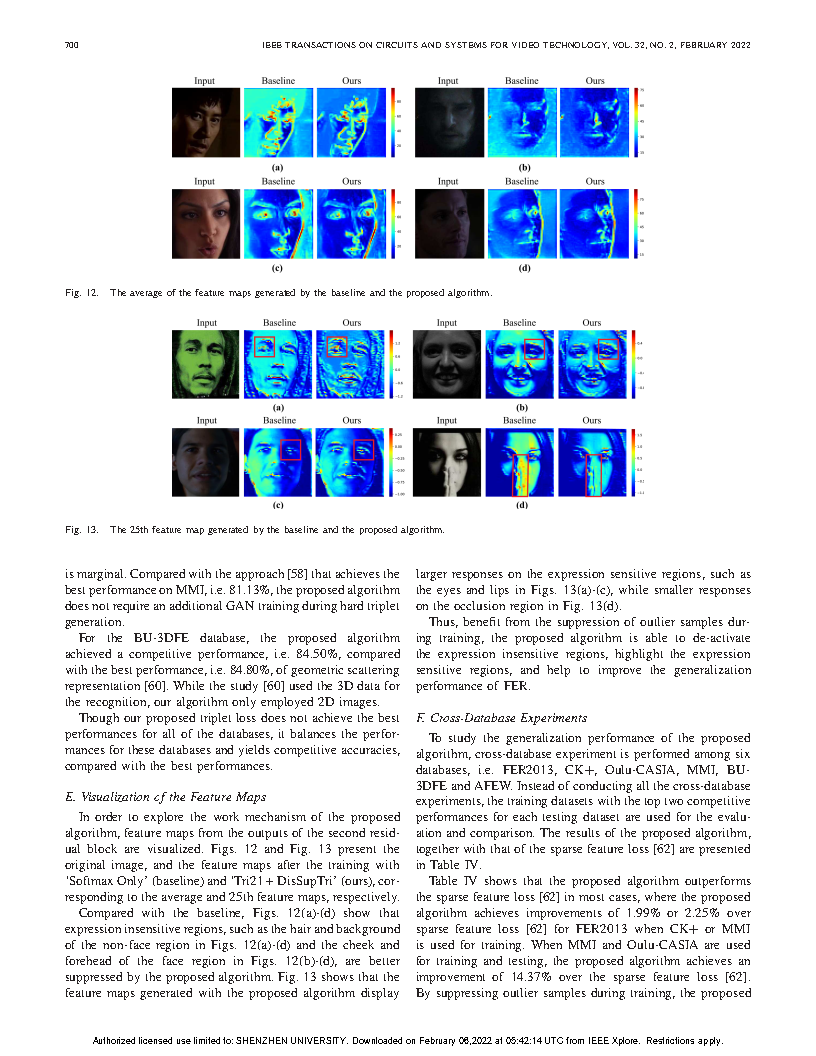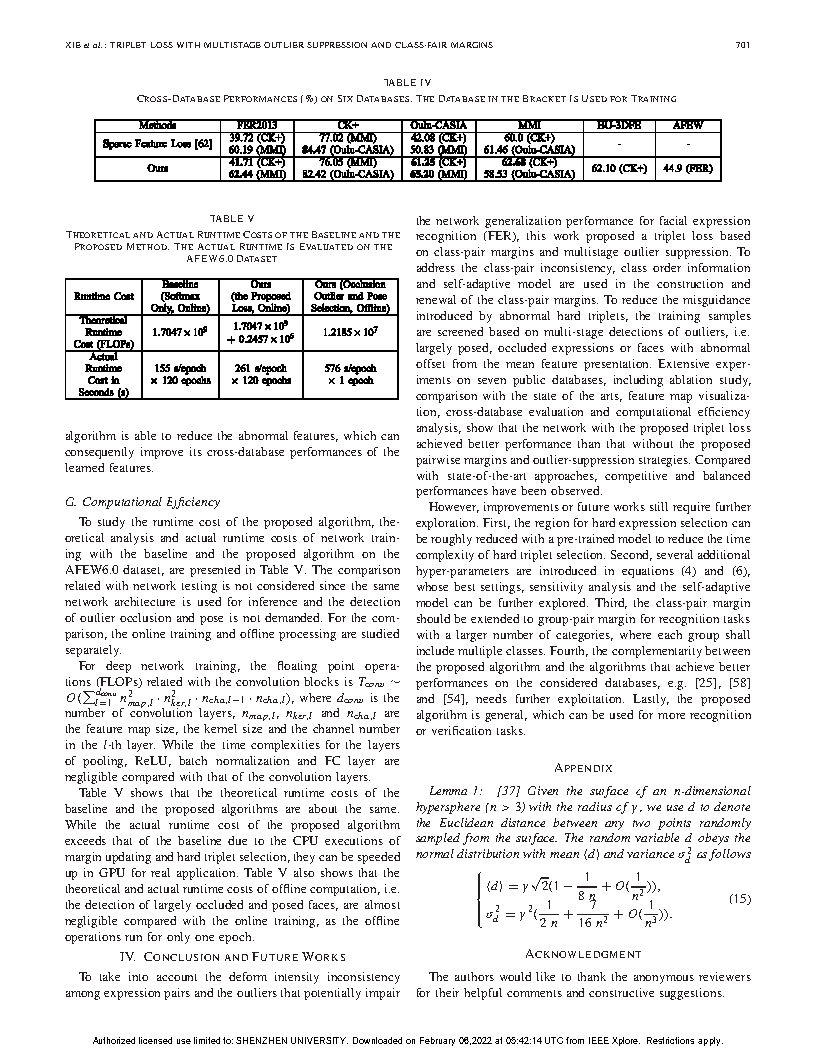Triplet Loss With Multistage Outlier Suppression and Class-Pair Margins for Facial Expression Recognition |
|
Weicheng Xie
Haoqian Wu
Yi Tian
Mengchao Bai
Linlin
Shen
Computer Vision Institute, School of Computer Science and Software Engineering, Shenzhe
University, Shenzhen 518060, China
|

|
